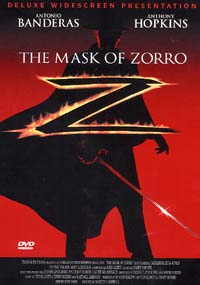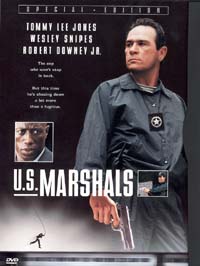https://www.austinchronicle.com/screens/1998-12-25/520895/
Scanlines
1998 Video Wrap-Up
December 25, 1998, Screens
 This year was a transitional one for the video industry, at least as far as home viewing options go. A number of video entertainment formats are currently available, although some are likely to dwindle and die in the near future. Others may reach what is lovingly called "critical mass," a state that guarantees big profits for the industry and a broad spectrum of products for the buying public.
This year was a transitional one for the video industry, at least as far as home viewing options go. A number of video entertainment formats are currently available, although some are likely to dwindle and die in the near future. Others may reach what is lovingly called "critical mass," a state that guarantees big profits for the industry and a broad spectrum of products for the buying public.
VHS, the dinosaur of video formats, is unlikely to go away in the near future. When first introduced, VCRs were top-loading monstrosities with more problems than options. After winning the war with Beta, at least in the U.S., VHS established itself as a versatile and durable video medium. Current machines are small, sleek, and packed with special effects. The overall quality of sound and picture of VHS hasn't really improved, but the number of films, television shows, and music videos available is staggering. A pleasant recent development has seen an increase in the numbers of VHS films presented in widescreen format, although a surprising number of people still can't stand watching a movie with bars at the top and bottom of the screen. Tape degrades over time, but it's recordable and reusable. That's an option no other format has going for it. Yet. Realistically, I expect to wear out two or three more VCRs before VHS goes away.
Laserdisc, on the other hand, appears to be on its last legs. None of the major video chains (at least that I'm aware of) gives laser significant shelf space anymore, in spite of the fact that there are still a fair number of new releases. And nothing lives long without shelf space. Diehards can still find a good selection on the Internet at sites like Ken Crane's, but that's about it. Maybe the format was too clunky, with its LP-sized silver discs that couldn't hold an entire film on a single side. Still, laser was a significant step in video evolution, providing a level of quality in picture and sound that VHS couldn't come close to duplicating. Some laserdiscs also broke new ground by offering such extras as trailers, excised footage, additional audio tracks with commentary, and making-of featurettes. Still, it looks like laserdisc is toast. It would take nothing short of a miracle for laser to survive as a viable format into the next century.
 DVD is ready to fill the void that laser is vacating, however. Unlike laserdiscs, DVDs are the same size as audio CDs. A fact that, in addition to making them more aesthetically and financially acceptable to buyers, makes it possible to house a DVD drive in a computer. Before too long, it's likely that computer games will be marketed in the format. The next generation of game consoles may also be DVD-based. With a common format, computing, home video, and gaming could theoretically be merged into a single multi-purpose home entertainment console. That's around the corner, though; what DVD does right now is provide a state-of-the-art video and audio format that's ideal for home theater.
DVD is ready to fill the void that laser is vacating, however. Unlike laserdiscs, DVDs are the same size as audio CDs. A fact that, in addition to making them more aesthetically and financially acceptable to buyers, makes it possible to house a DVD drive in a computer. Before too long, it's likely that computer games will be marketed in the format. The next generation of game consoles may also be DVD-based. With a common format, computing, home video, and gaming could theoretically be merged into a single multi-purpose home entertainment console. That's around the corner, though; what DVD does right now is provide a state-of-the-art video and audio format that's ideal for home theater.
Many DVDs present films in both a widescreen and full-frame version. Special features abound and virtually all are accessible through a main menu. Want to see The Wizard of Oz in French? No problem. How about the alternate endings and missing scenes from Austin Powers? Bingo, there they are. DVD players are a hot item this Christmas, and the user base may soon be large enough to guarantee the format a healthy future for several years to come.
So VHS and DVD will continue to rule for the next few years, right? Well, not necessarily. Things are rarely that simple on the home video battlefield. Recently, another DVD-based option made its appearance. Called Divx, the format is like DVD in that it requires a player and uses similar discs to store movies. The difference is that Divx doesn't allow the buyer unlimited use of the disc after its purchase. After a few days, or plays, the disc can no longer be viewed unless the owner contacts the system provider (via a phone line which must be plugged into the player for the transaction to take place) and is billed on a per-viewing basis. So Divx is essentially a pay-for-view system where the owner controls what movies are available by buying discs. The upside is that the discs are much less expensive than standard DVDs, but there are considerable drawbacks. A number of Divx films are only available in pan-and-scan versions, and if the format goes belly-up (always a possibility) discs will likely then be unwatchable without the system codes necessary to make them viewable.
At this point, Divx looks like a longshot at best. DVD and VHS are likely to stay healthy through the turn of the millennium and beyond, unless something unforeseen happens. In the meantime, we'll all have to pay our money and take our chances. --Bud Simons
Copyright © 2024 Austin Chronicle Corporation. All rights reserved.
